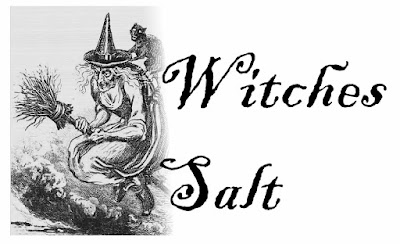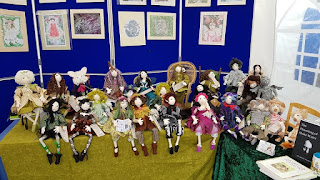I thought I would start this blurb about the origins of the name but even this
seems open to question...
On one hand it is believed that the word ‘cauldron ‘comes from the
Latin ‘caldaria' meaning cooking pot while some experts say that word cauldron
was first recorded in the middle ages as ‘caudroun' (13th century) and
originally came from the Norman ‘caudron.’
Whatever the origins of the name the cauldron is often made of cast iron
bronze or silver.
In domestic history they were used as a cooking vessel but they are most commonly
associated with witchcraft; a cliche popularized by works of fiction such
as Macbeth where the three witches used a cauldron to prepare their potions.
A cauldron according to legend was the most important tool in a witches house and
would be used to brew up vile potions using such ingredients as bats blood, decapitated
and flayed toads, snakes and baby fat.
Before every Sabbat the witch would prepare their flying ointment using the cauldron
and for the feast broiled children were the preferred snack!
If that wasn’t enough fun after the sabbat they would ride on their brooms out
over the ocean and dump the contents of their cauldrons in to the seas so causing
storms across the ocean or by throwing locks of their hair into the water.
Some more bizarre cauldrons were used such as the one belonging to Lady
Alice Kyteler. This Irish witch used the skull of a beheaded robber for mixing up
her potions and poisons.
She was the first recorded person condemned to death in Ireland, however she did escape. But her servant was caught, flogged and burnt to death.
The Gundestrop Cauldron from Denmark
This cauldron was fashioned out of silver in about 100 BC and
found in a peat bog in Gundestrop, Denmark. The decorations depict victims
being plunged headfirst into a sacrificial cauldron.
The cauldron is a symbol of rebirth, the hearth and of abundance and well being. There are many stories from the Ancient Celts that tell of cauldrons from which endless food would pour and nobody would ever go hungry, and the dead if thrown in would return to life albeit without the ability to speak. Some say that they also lacked their soul.
In Wicca the cauldron is associated with the goddess, Cerridwen, it not only symbolises the goddess but also the womb. She was an enchantress in Welsh medieval legends and she possessed a cauldron of poetic inspiration in which she made a magical brew of herbs, roots and the foam of the ocean, prepared according to the movements of the heavenly bodies. This potion brewed for a year and a day to yield three drops which bestowed knowledge, inspiration and science.
She is regarded by many modern Pagans as the goddess of rebirth, transformation and inspiration.
She possessed the gifts of prophecy and shape shifting and is associated with water and the Moon which represents the emotions, the unconscious and intuition.
The Lisdrumturk Cauldron
Found in 1854 Co Monaghan by turf cutters.
Dated late Bronze Age
Among the Celts, the priestess of the moon goddess was required to sacrifice human
victims by cutting off their heads over a silver cauldron. The blood was then boiled
to produce a magical drink of inspiration.
Example of a bronze ritual tripod cauldron with cover
from the 5th to 4th century BC, China.
A 14th century Wizard Lord William Soulis was executed using a cauldron. He was described as being a pernicious wizard and perpetrator of the most foul sorceries. According to legend he was capable of summoning demons, the most prominent was Robin Redcap with which he engaged in so many acts of evil depravity that his own castle began to sink into the earth to 'hide its sin from God'
Complaints about Soulis's behaviour reached the King, Robert the Bruce, and
he cried out " Soules! Soules! Go boil him brew!"
Soulis was so unpopular by then that the locals took the King at his word and caught and bound him, using a specially forged chain to bind him as no ordinary rope could contain his evil powers. They took him to the summit of Nine Stang Rig and put him a cauldron of molten lead and suspended it over a large fire.
These days cauldrons are not used for such violent acts, I hope,. They represent the female aspect of divinity, the womb and are used in conjunction with wands, swords, athames in symbolic representation of The Great Rite which is the ritualised sexual connection between god and goddess)
Interestingly enough many of the cauldrons used through out southern England from 1650 onwards were made in Somerset. The villages of South Petherton and Montacute were major centres of production. And the Museum of Somerset holds the largest collection of English cauldrons in existence.
Bronze cauldron from a foundry in South Petherton with the makers name of William Sturton II.
This foundry was producing goods from 1630's to 1690's.
Oh and an interesting snippet to finish with....
Leprechauns hide their gold inside cauldrons, so check yours before use!

















































